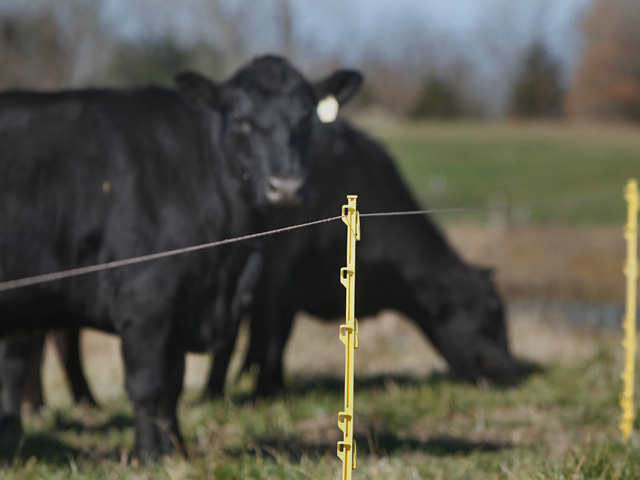SD Grazing Research Goes Natural
Grazing Using Perennial Grasses Can Have Positive Effect on Soil
OMAHA (DTN) -- With soil health awareness becoming more important to some, farmers can successfully integrate livestock into existing grain operations by restoring native species of grasses. Livestock can keep nutrients on the land while utilizing full-season forage crops and cover crops, as well as perennials, in pasture rotations.
In a presentation during the 2020 Dakota Lakes Research Farm Virtual Field Day, Cody Zilverberg, adjunct assistant professor at South Dakota State University (SDSU) and researcher at the farm, said land is a biological system with energy, water and mineral cycles.
Central South Dakota, like much of the Midwest, was native prairie at one time, and this natural system is something producers should try to mimic, he explained.
ADVANTAGE OF GRASS
Zilverberg said there are several advantages for utilizing perennials in terms of soil health in a farming operation. A basic advantage of grass is it always covers the soil -- almost acting as a suit of armor.
Grasses such as switchgrass and big bluestem have an extremely deep root system. This system can locate and pull up nutrients deep out of the soil to be utilized by plants, something annual plants cannot do.
Plants with deep roots can also draw down the water table, which would be a major advantage in times of wet field conditions. Much of South Dakota, especially the eastern half of the state, saw above average rainfall during the 2019 growing season.
Another advantage of utilizing grass is livestock can be added to create economic diversity and add another revenue stream for the farm. Livestock can harvest grasses while keeping nutrient levels high in the soil, he said.
P[L1] D[0x0] M[300x250] OOP[F] ADUNIT[] T[]
Zilverberg said research shows livestock will pull more nutrients from soil in a feedlot situation versus grazing. Cattle in a feedlot remove 56 pounds of nitrogen (N) and 6 lbs of phosphorus (P) from the soil, while grazing cattle only remove 9 lbs of N and 2 lbs of P.
"There are several advantages to keeping cattle on the land," Zilverberg said.
At the Dakota Lake Research Farm near Pierre, researchers graze perennial grasses in a rotation. Switchgrass is grazed for five years, followed by 15 years of annual crops (corn, soybeans and wheat).
This perennial and annual crop rotation allows positive biological aspects of having perennial grasses in such a rotation, he said.
HOW LONG TO GRAZE?
Zilverberg said the ultimate question researchers are asking in regards to incorporating livestock and grazing perennial grasses is how long to keep animals (and thus nutrients) on the land. At the research farm, they are analyzing different methods to see what works, but he added there is no one-way-fits-all method: Every farm and grazing situation is different.
One practice they are using is tallgrass interseeded with various annuals, including peas, flax, barley, oats and lentils. The cattle will graze the standing forage crops and then be moved into another part of the field, he said.
Another grazing technique at the research farm would be bale grazing and strip grazing at the same time, Zilverberg said. Two forage crops would be planted with the first one baled and removed and then a second crop planted right after the first.
Once the second crop grows, cattle graze the second crop, he said. At the same time, they will be fed the baled hay from the first forage crop.
"So we are keeping all those nutrients and all that biomass, that organic material, on the field where it originated from," he said.
WINTER GRAZING
Zilverberg said a large part of livestock integration research is finding a way to keep the cattle grazing during the often-harsh South Dakota winters.
To do this, they will plant a cover crop after wheat harvest, swath the crop in the fall, and then allow the cattle to graze on these swaths throughout the winter, he explained. Fences are moved regularly, which allows the cattle to graze a select amount of the swathed forage.
Zilverberg said the forage is almost freeze-preserved in this method. By swathing the forage in fall right before cold weather, the cut forage is not deteriorated by summer rains and a nutritious forage is available to grazing cattle.
Snow covering the forage is rarely any problem at the farm as cattle can seem to find it, he said. If snow has a thick crust, sometimes the farmers will drive four-wheel ATVs or some other vehicle on the swaths to break up the crust so cattle can get to the forage.
The cattle may be moved off the fields during spring for short periods of time in wet weather or as the soil thaws. This allows water to infiltrate the soil and prevent the cattle from tearing up the fields, Zilverberg said.
Russ Quinn can be reached at russ.quinn@dtn.com
Follow him on Twitter @RussQuinnDTN
(c) Copyright 2020 DTN, LLC. All rights reserved.




